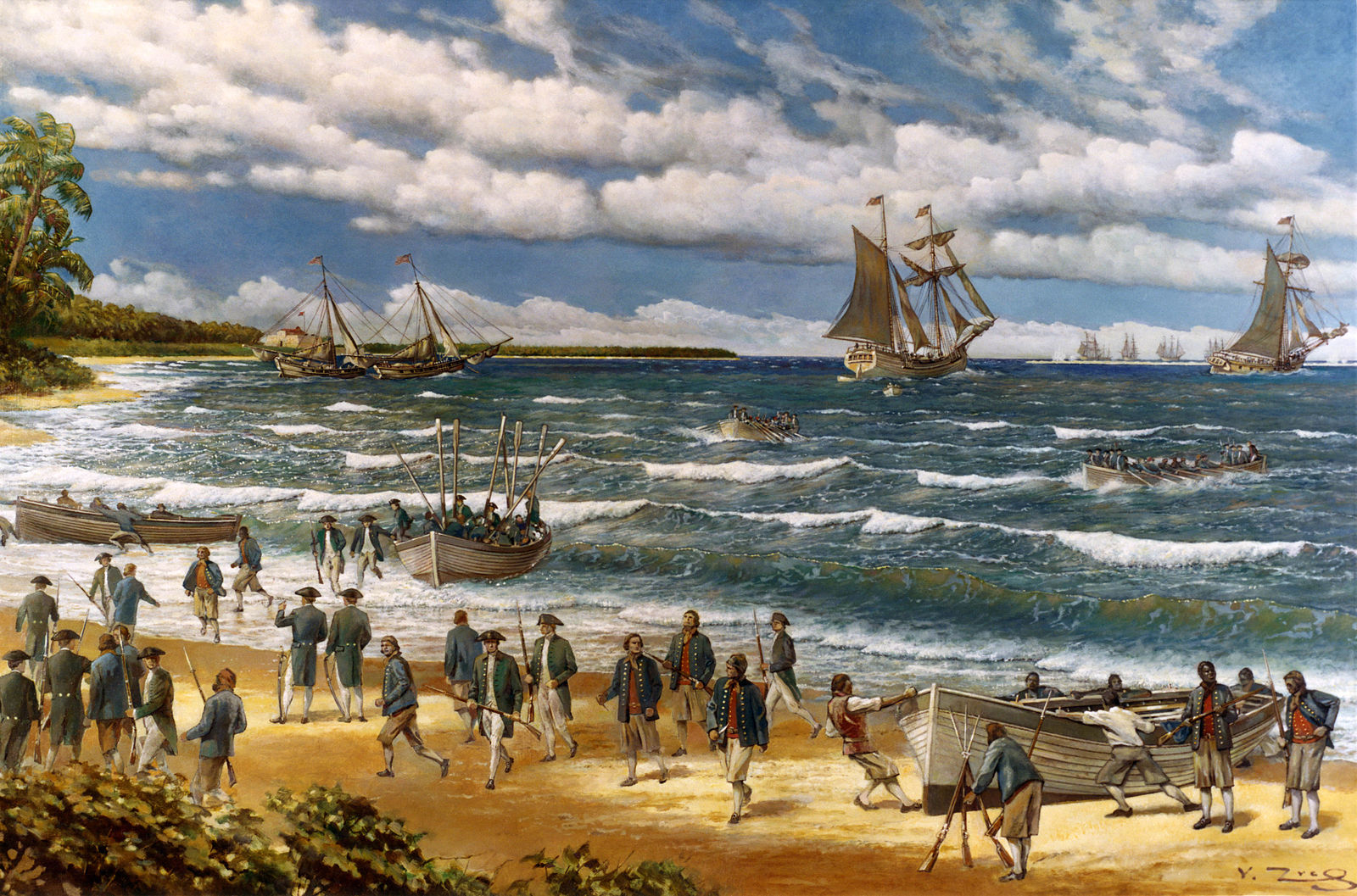A tiny Marine Corps’ big successes in the Revolution

Continental Marines land at New Providence during the Battle of Nassau.
SUMMARY
The Continental Marine Corps claimed big successes in the American Revolution. It punched way above its size and provided a strong example to the generations of Marines that followed.
The call for Marines came from the October 13, 1775, legislation that formed the Continental Navy. In addition to allocating funds for the purchase of ships and ordering a committee to create rules and regulations for the Navy, it authorized leaders in the new Navy to muster Marines.
Marines served aboard ships in order to protect captains and ship officers, and they targeted enemy officers and helmsmen during ship-to-ship engagements. As a part of the ships, they served in Navy battles. And four companies of Marines served with George Washington in the defense of Philadelphia.
But they also conducted two amphibious landings in the Bahamas, seizing naval stores and British ships.
The Continental Marines fighting
Marine Commandant Capt. Samuel Nicholas went from running a small bar called Tun Tavern to raising five companies of Marines in 1775. He then led them on a Naval mission to the Bahamas. Navy Commodore Esek Hopkins led the overall mission to the Caribbean, where American forces sought to seize resources, harass British forces and capture vessels. They would later get in trouble for this, though, as their actual orders were to patrol near the southern colonies.
The large British presence at Nassau proved a tempting target. The port city boasted two forts and large military stores. Of course, that meant it had plenty of defenders and defenses. But Nicholas suspected that it was ill-prepared to repel an attack anyway.
And he was right. The defenders were mostly poorly trained militias, and the forts were in ill repair. In March 1776, he led 284 men, mostly Marines, against the city. The British launched just a token opposition before the governor fled with the militia. Nicholas spoke to another leader under a flag of truce.
After a negotiated ceasefire, the British did manage to smuggle out 162 barrels of powder, but the Americans got a bit of powder as well as additional supplies, some American ships that had been captured, and mortars and cannons.
As the fleet made its way back to the American continent, it fought a series of small naval battles, securing more gunpowder and two ships but also suffering the first U.S. Marine casualty in history, Lt. John Fitzpatrick, a detachment commander.
Return to the colonies
Ultimately, the fleet was missed off the coast of the southern colonies, and the naval commander, Commodore Esek Hopkins, had to apologize for leaving his station. If he'd secured more gunpowder, he might have been forgiven. But his violation of his orders and reports that he'd tortured prisoners led to his censure by Congress and a 1778 dismissal from naval service.
For the small group of Marines on the mission though, they won their amphibious landings with no casualties. They contributed to naval victories. And they proved their worth on ship.
The Marine Corps today carries forward the legacy of those first landings.
SHARE
